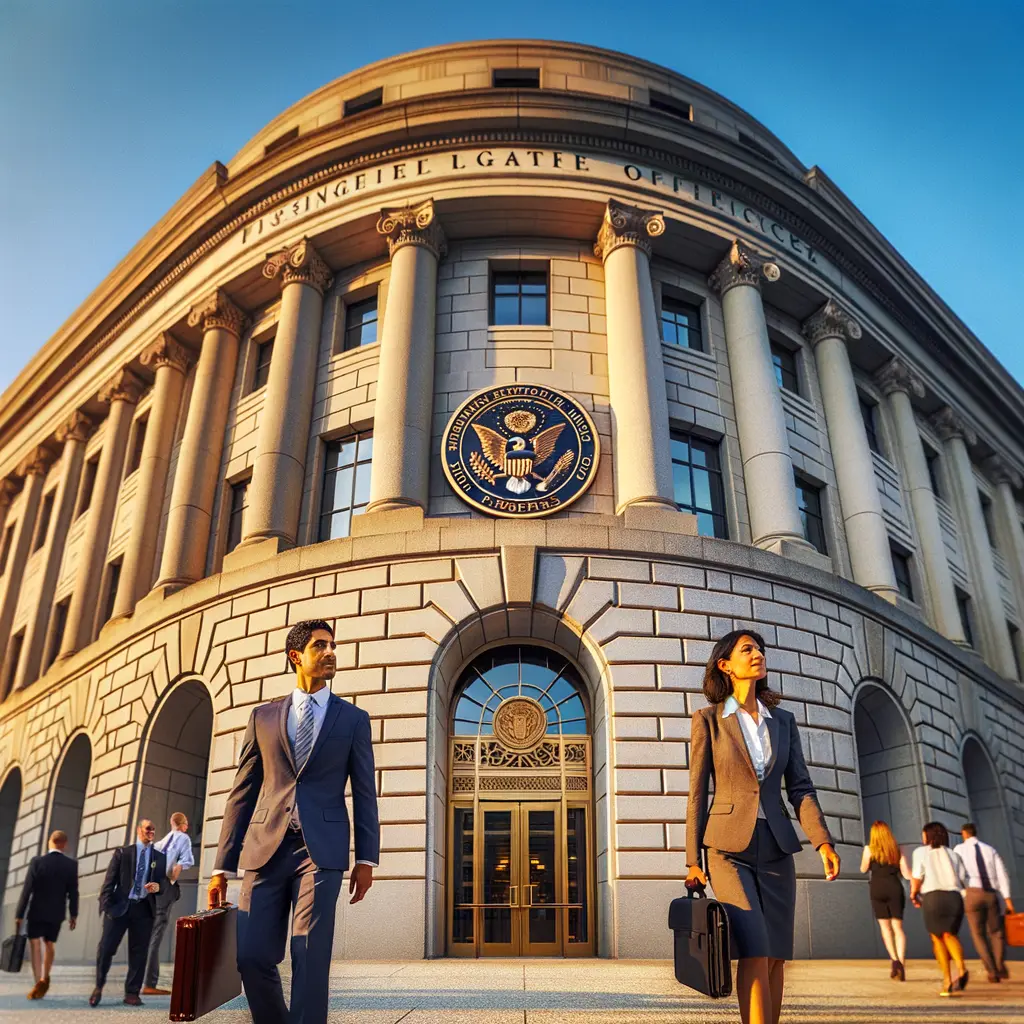Why the SEC Crypto Regulations Overhaul Matters Now
Crypto prices may have wobbled after the latest jobs data, but the real headline this week is the Securities and Exchange Commission’s decision to revisit its rulebook. The agency’s spring 2025 Unified Agenda signals the first comprehensive rethink of SEC crypto regulations in years, and it arrives at a moment when Bitcoin, Ether and Solana are all trading under pressure.
In practical terms, the revamp means the Commission wants to clarify how digital assets are issued, custodied and traded. Chair Paul Atkins called clear “rules of the road” for crypto a top priority—language that resonates with investors still nervous after a string of enforcement actions.
Why should the average market participant care? Because SEC crypto regulations influence everything from exchange listings to tax reporting and even whether your favorite project can raise capital. A friendlier framework could unlock fresh liquidity and mainstream adoption; a restrictive one could push innovation overseas.
Key points to monitor include possible safe-harbors for token launches, streamlined disclosures for decentralized projects, and lighter compliance regimes for experimental protocols.
For additional background, read our analysis of Bitcoin ETF approvals and our primer on the difference between commodities and securities in crypto. Together, these pieces paint the broader policy mosaic that traders must navigate.

Inside the SEC’s 2025 Unified Agenda for Crypto
Digging into the 89-page document reveals exactly where the Commission plans to tweak SEC crypto regulations. First up is a proposal to redefine what constitutes the “offer and sale” of a digital asset. The SEC hints at safe-harbors that would let early-stage protocols distribute tokens without immediately triggering securities status—provided strict reporting rules are met.
Another section tackles custody. The agency wants qualified custodians, such as banks and trust companies, to maintain on-chain proof of reserves while still adhering to traditional audit standards. This dual-track approach could bring long-sought cryptocurrency compliance clarity to both exchanges and institutional asset managers.
Finally, the Commission floats easing transfer-agent requirements, a move designed to facilitate near-instant settlement on public blockchains. That dovetails with industry pushes for T+0 clearing and could drastically cut back-office costs.
Taken together, the SEC crypto agenda tries to balance innovation with consumer protection. It also aligns U.S. policy with the EU’s MiCA framework and the U.K.’s proposed Digital Securities Sandbox. For a deeper dive, check out our guide to choosing a crypto custody solution and our explainer on global stable-coin regulations.

Investor Impact of New Crypto Regulatory Proposals
What do the new crypto regulatory proposals mean for retail and institutional investors? First, increased clarity around SEC crypto regulations typically narrows bid-ask spreads. When market-makers understand the legal environment, they quote tighter prices. Second, safe-harbors could open the door to compliant token airdrops—allowing everyday users to participate in protocol growth without worrying about unregistered securities.
Institutional desks stand to benefit from standardized custody guidance. US Bank’s decision to revive its digital-asset service is a direct response to this momentum. With a blue-chip custodian in play, pension funds and endowments gain the green light to deploy capital across Bitcoin ETFs and staking products.
Investors should also prepare for more stringent disclosure obligations. Expect projects to publish quarterly updates, code audits and even on-chain treasury reports. That level of transparency could reduce rug-pull risk, ultimately attracting conservative capital that has so far remained on the sidelines.
Practical takeaways:
• Reassess portfolio weighting as liquidity conditions improve.
• Monitor draft rules in the Federal Register; a 60-day comment window is standard.
• Use on-chain analytics to verify that your exchange or wallet meets forthcoming cryptocurrency compliance benchmarks.
For more context, see our breakdown of Layer-1 valuation metrics.
Banking on Clarity: US Bank Reopens Crypto Custody
Minutes after the SEC crypto agenda went public, US Bank announced the relaunch of its institutional custody platform—a strong signal that traditional finance is ready to re-engage. The bank, in partnership with New York Digital Investment Group (NYDIG), will offer cold-storage solutions, insurance coverage and administrative services for Bitcoin ETFs.
Why the about-face? Executives cite “greater regulatory clarity,” specifically the draft language around qualified custodians and proof-of-reserves. By aligning its processes with forthcoming SEC crypto regulations, US Bank aims to capture a slice of the $50-billion market for institutional digital-asset custody.
The move pressures rival banks like State Street and BNY Mellon to accelerate their own offerings. It also reassures asset managers that their holdings meet the highest cryptocurrency compliance standards—an essential box to tick before pension funds can allocate.
Investors should watch for fee compression as competition heats up, as well as for bundled services that combine custody, staking and lending. The trend mirrors custody wars in the traditional securities world and underscores how crypto market impact now reverberates across legacy finance.
For further reading, explore our comparison of major U.S. crypto-friendly banks.

Tokenization Takes Off: Galaxy & Superstate Case Study
The SEC’s push for modernized rules is already spawning innovation. Galaxy Digital and Superstate have tokenized Galaxy’s NASDAQ-listed Class A shares on the Solana blockchain—claiming the first instance of SEC-registered public equity trading on-chain.
Under existing SEC crypto regulations, the shares remain the same security; the technology layer simply migrates settlement from the DTCC to Solana. Investors can now trade 24/7, settle instantly and potentially plug their equity into DeFi protocols for collateralized lending.
The case study illustrates how clearer crypto regulatory proposals unlock new business models. Tokenized shares could streamline dividends, proxy voting and corporate actions, driving down administrative costs for issuers while boosting liquidity for shareholders.
Superstate CEO Robert Leshner says dozens of “crypto-adjacent” firms have inquired about similar offerings. While widespread adoption across the S&P 500 may take years, early movers gain a reputational edge and operational efficiencies.
The broader crypto market impact is a virtuous cycle: as tokenized equity gains traction, demand for audited stable-coins and on-chain treasury products will also rise, further legitimizing blockchain rails.
To understand the technical nuances, read our tutorial on Solana’s token-program architecture and our feature on real-world asset (RWA) lending.

Future Outlook: Navigating the Evolving SEC Crypto Landscape
The next 12 months will be pivotal. Draft rules must survive public comment, inter-agency review and, potentially, court challenges. Yet momentum is undeniable: from US Bank’s custody reboot to Galaxy’s tokenized shares, industry leaders are already building to anticipated standards.
For investors, the playbook is straightforward. Keep an eye on the Federal Register for updates; align portfolios with assets most likely to benefit from SEC crypto regulations; and vet service providers for stringent cryptocurrency compliance.
Projects, meanwhile, should prepare for enhanced disclosures, audited smart contracts and possibly sandbox exemptions that encourage innovation without sacrificing consumer protection.
If successfully implemented, the SEC crypto agenda could shift the global center of digital-asset innovation back to the United States, mitigating the brain drain to jurisdictions like Singapore and Switzerland. That scenario would expand market depth, broaden investor participation and solidify crypto’s role in mainstream finance.
Looking ahead, expect convergence between traditional and decentralized markets. In five years, you may not distinguish between a tokenized share and a “regular” one—the rails will simply be faster, cheaper and more transparent.
For continuous coverage, bookmark our live policy tracker and revisit our deep dive into decentralized identity standards that could complement future KYC rules.
Ultimately, staying informed about SEC crypto regulations is no longer optional—it’s the cornerstone of smart crypto strategy in 2025 and beyond.







